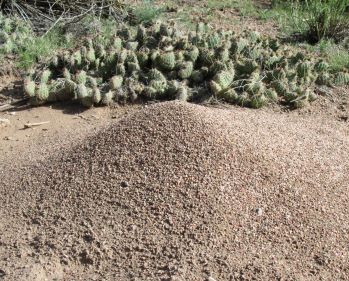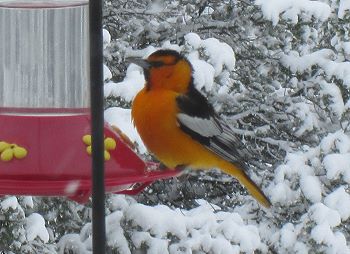Location
 The homestead is located in the high desert of the Rocky Mountains at an altitude above 7500 feet. We are 5 miles from the nearest maintained road or utility pole (electricity, landline phone, cable). Most of the surrounding area is BLM and/or National Forest.
The homestead is located in the high desert of the Rocky Mountains at an altitude above 7500 feet. We are 5 miles from the nearest maintained road or utility pole (electricity, landline phone, cable). Most of the surrounding area is BLM and/or National Forest.
It is a 45 minute round trip just to get our mail and 35 minutes one way to the nearest small grocery store. A decent building supply box store or "real" grocery store is an 80 minute drive one way. Projects and errands have to be planned carefully.
We've always wanted a place where you can literally walk out the front door and hike or explore for days without coming across many signs of industrial civilization. Although, truth be told, we are now a bit too old and broken for extended hiking.
The Terrain
 While many may think of the Rocky Mountains as being lush forest (such as it is portrayed in the movies and TV), much of the area is actually high desert. In our area, the trees are primarily pinon pine with the occasional scrub oak or juniper. The primary ground cover is tumble weed, some prairie grass and a fair number of huge ant hills.
While many may think of the Rocky Mountains as being lush forest (such as it is portrayed in the movies and TV), much of the area is actually high desert. In our area, the trees are primarily pinon pine with the occasional scrub oak or juniper. The primary ground cover is tumble weed, some prairie grass and a fair number of huge ant hills.
We actually have scorpions, rattle snakes and the occasional tarantula spider.
However, since we are near the Continental Divide, we do get very cold winters and more than a dusting of snow. In fact, the 200 foot walk from the house to the chickens / gardens gets old in 2' of snow/ice. The four season greenhouse will be 300 feet away - that should be fun.
The Wildlife
 On the upside, in addition to the arachnids and snakes, we have an abundance of creatures that allow us to share their space. This includes wild rabbits and jack rabbits, chipmonks, deer, bear, mountain lions and packs of coyotes. We have identified about a dozen or so species of birds, including 20-30 hummingbirds at a time during their migration.
On the upside, in addition to the arachnids and snakes, we have an abundance of creatures that allow us to share their space. This includes wild rabbits and jack rabbits, chipmonks, deer, bear, mountain lions and packs of coyotes. We have identified about a dozen or so species of birds, including 20-30 hummingbirds at a time during their migration.
There is a mated pair of ravens that nest in the nearby cliffs and visit daily. The deer frequently come within 40 feet of the house.
And yes, this little guy is sitting on the hummingbird feeder after a late spring snow storm.
Off-The-Grid
Solar PV System: The main house is powered by two pole mount solar PV arrays that charge a bank of 24 two-volt L16 RE2 1110 Amp Hour batteries. There is 13KW propane back-up generator and the entire system runs Outback charge controllers, inverters and control panels. This powers up a 200-amp, 220-Volt normal household breaker box.
While it is "almost" like being on the grid, we do have to watch what we run simultaneously and remember to turn off what we turned on when not in use. We had to switch from desktop to laptop computers because of the huge difference is power requirements.
The shop and chicken coop / garden shed are each powered by their own smaller solar PV systems with a dual-fuel generator for the shop when the big tools are needed.
Gardening
In case you missed our definition of Hostile Gardening on the home page, here it is again:
A combination of organic gardening in a high-altitude (thinner air and shorter growing seasons with dramatic temperature variations), high desert, high winds, poor soil (dead sand) environment - with garden pests that range from chipmonks and rabbits to deer and bear.
However, growing as much of your own food as possible is necessary if you wish to eat a healthy organic diet - one free of insecticides, pesticides, petroleum based fertilizers and GMOs.
We started by putting up an 8' high metal game fence around 1/2 acre of what was horse pasture. This was necessary to keep the deer from eating everything. As soon as the fruit trees, grapes and berries start to produce, we will have to add 3-4 strands of electric fence around the entire area in an attempt to keep the bears at bay.
We had to make or amend all the soil for planting. Either via sheet mulching or many dozens of bags of Eco Compost. Now that we have chickens, we should have a never ending supply of nutrient rich compost.
We started with some raised beds and water trough container gardening (see the Projects page) and recently did an 8' x 16' x 2' deep swale for the grapes and berries. You can follow the Projects or Blog to keep updated.
